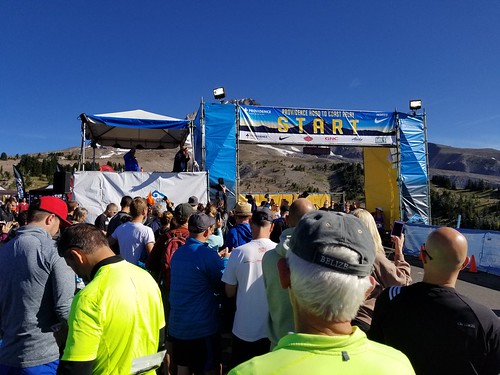Y, VGRs expressed high levels of PGE2 in serum and skin tissues. Meanwhile, Pomalidomide site DermAid 0.5 significantly suppressed PGE2 production and also the effect was a lot more prominent in serum as shown in Fig. three. This discovering might be associated together with the inhibitory effect of HC on phospholipase-A2, which in turn blocks local/systemic prostaglandin synthesis. Alternatively, co-loaded NPbased formulations effectively controlled the systemic and local production of PGE2 as shown in Fig. three. PGE2 VEGF-a Significant up-regulation of VEGF-a in serum and skin tissues have been observed in AD-induced NG-CONT and VGRs groups compared to the baseline group. In contrast, VEGF-a was beneath the detection limit in the baseline group. These findings consequently suggest that VEGF-a expression may be the pathological sign for serious inflammatory events. The resulting larger level of VEGF-a initiates vasculogenesis and angiogenesis. In addition, enhanced permeability of blood vessels and infiltration of immune cells in to the skin tissues could also  be associated with high expression of VEGF-a. VEGF-a act as a chemoattractant for different inflammatory cells and additional aggravates underlying ADlike skin lesions, which have been observed in atopic and VGR groups. The topical application of NP-based formulations drastically decreased VEGF-a level in serum and skin tissues compared to non-NPbased formulations. In addition, the suppressive impact of NP-based formulations on VEGF-a expression was extra pronounced in skin tissues. It’s assumed that this Nanoparticles for Immunomodulation in Atopic Dermatitis eight Nanoparticles for Immunomodulation in Atopic Dermatitis 9 Nanoparticles for Immunomodulation in Atopic Dermatitis improved anti-VEGF-a impact inside the skin is as a result of adequate retention of drugs in the target internet site by CS NPs. TH1 cytokines The therapeutic effectiveness of PubMed ID:http://jpet.aspetjournals.org/content/128/2/131 formulations was also explored by measuring TH1-specific cytokines, IL-12p70 and IFN-c, as well as the pro-inflammatory cytokine, TNF-a in the present study. Fig. 4 highlights that the atopic group expressed the highest concentrations of IL-12p70 in serum and skin tissues respectively, compared using the baseline group. Similarly, Fig. four depicts that critically pathologic levels of IFN-c were also measured in serum and skin homogenates of untreated ADinduced atopic mice, respectively. These findings were in agreement with previously published study. In accordance with that, IL-12p70 is over-expressed by infiltrated inflammatory cells, for example NK cells, macrophages, and eosinophils that migrate in the systemic circulation into the dermis. Overexpression of IL12p70 mediates sequential activation of TH0- to TH1-type lymphocytes as a constructive feedback mechanism. In addition, IL12p70 stimulates signal transduction molecules to induce overproduction of other pro-inflammatory cytokines and further aggravates underlying AD cascades. In addition, the pleiotropic nature of IFN-c induces proliferation and differentiation of infiltrating macrophages by way of macrophage-stimulating aspects. Fig. four also highlights that the atopic mice also expressed greater TNF-a levels in serum and skin tissues in comparison to the baseline group. The higher expression of TNF-a could also as a consequence of higher 937039-45-7 numbers of macrophage and basophils infiltrated in to the dermis. Slight reductions in IL-12p70, IFN-c, and TNF-a had been observed in serum and skin tissue samples from VGRs. On the other hand, DermAid 0.five considerably suppressed the expression TH1- and pro-inflammatory cytokines in both.Y, VGRs expressed high levels of PGE2 in serum and skin tissues. Meanwhile, DermAid 0.5 considerably suppressed PGE2 production and also the impact was additional prominent in serum as shown in Fig. three. This obtaining could be related with the inhibitory impact of HC on phospholipase-A2, which in turn blocks local/systemic prostaglandin synthesis. However, co-loaded NPbased formulations effectively controlled the systemic and local production of PGE2 as shown in Fig. three. PGE2 VEGF-a Considerable up-regulation of VEGF-a in serum and skin tissues have been observed in AD-induced
be associated with high expression of VEGF-a. VEGF-a act as a chemoattractant for different inflammatory cells and additional aggravates underlying ADlike skin lesions, which have been observed in atopic and VGR groups. The topical application of NP-based formulations drastically decreased VEGF-a level in serum and skin tissues compared to non-NPbased formulations. In addition, the suppressive impact of NP-based formulations on VEGF-a expression was extra pronounced in skin tissues. It’s assumed that this Nanoparticles for Immunomodulation in Atopic Dermatitis eight Nanoparticles for Immunomodulation in Atopic Dermatitis 9 Nanoparticles for Immunomodulation in Atopic Dermatitis improved anti-VEGF-a impact inside the skin is as a result of adequate retention of drugs in the target internet site by CS NPs. TH1 cytokines The therapeutic effectiveness of PubMed ID:http://jpet.aspetjournals.org/content/128/2/131 formulations was also explored by measuring TH1-specific cytokines, IL-12p70 and IFN-c, as well as the pro-inflammatory cytokine, TNF-a in the present study. Fig. 4 highlights that the atopic group expressed the highest concentrations of IL-12p70 in serum and skin tissues respectively, compared using the baseline group. Similarly, Fig. four depicts that critically pathologic levels of IFN-c were also measured in serum and skin homogenates of untreated ADinduced atopic mice, respectively. These findings were in agreement with previously published study. In accordance with that, IL-12p70 is over-expressed by infiltrated inflammatory cells, for example NK cells, macrophages, and eosinophils that migrate in the systemic circulation into the dermis. Overexpression of IL12p70 mediates sequential activation of TH0- to TH1-type lymphocytes as a constructive feedback mechanism. In addition, IL12p70 stimulates signal transduction molecules to induce overproduction of other pro-inflammatory cytokines and further aggravates underlying AD cascades. In addition, the pleiotropic nature of IFN-c induces proliferation and differentiation of infiltrating macrophages by way of macrophage-stimulating aspects. Fig. four also highlights that the atopic mice also expressed greater TNF-a levels in serum and skin tissues in comparison to the baseline group. The higher expression of TNF-a could also as a consequence of higher 937039-45-7 numbers of macrophage and basophils infiltrated in to the dermis. Slight reductions in IL-12p70, IFN-c, and TNF-a had been observed in serum and skin tissue samples from VGRs. On the other hand, DermAid 0.five considerably suppressed the expression TH1- and pro-inflammatory cytokines in both.Y, VGRs expressed high levels of PGE2 in serum and skin tissues. Meanwhile, DermAid 0.5 considerably suppressed PGE2 production and also the impact was additional prominent in serum as shown in Fig. three. This obtaining could be related with the inhibitory impact of HC on phospholipase-A2, which in turn blocks local/systemic prostaglandin synthesis. However, co-loaded NPbased formulations effectively controlled the systemic and local production of PGE2 as shown in Fig. three. PGE2 VEGF-a Considerable up-regulation of VEGF-a in serum and skin tissues have been observed in AD-induced  NG-CONT and VGRs groups when compared with the baseline group. In contrast, VEGF-a was beneath the detection limit inside the baseline group. These findings consequently suggest that VEGF-a expression could be the pathological sign for extreme inflammatory events. The resulting higher amount of VEGF-a initiates vasculogenesis and angiogenesis. Moreover, enhanced permeability of blood vessels and infiltration of immune cells in to the skin tissues may also be connected with high expression of VEGF-a. VEGF-a act as a chemoattractant for a variety of inflammatory cells and additional aggravates underlying ADlike skin lesions, which had been observed in atopic and VGR groups. The topical application of NP-based formulations drastically decreased VEGF-a level in serum and skin tissues in comparison with non-NPbased formulations. In addition, the suppressive impact of NP-based formulations on VEGF-a expression was extra pronounced in skin tissues. It is assumed that this Nanoparticles for Immunomodulation in Atopic Dermatitis 8 Nanoparticles for Immunomodulation in Atopic Dermatitis 9 Nanoparticles for Immunomodulation in Atopic Dermatitis improved anti-VEGF-a impact inside the skin is as a consequence of sufficient retention of drugs at the target internet site by CS NPs. TH1 cytokines The therapeutic effectiveness of PubMed ID:http://jpet.aspetjournals.org/content/128/2/131 formulations was also explored by measuring TH1-specific cytokines, IL-12p70 and IFN-c, as well as the pro-inflammatory cytokine, TNF-a in the present study. Fig. 4 highlights that the atopic group expressed the highest concentrations of IL-12p70 in serum and skin tissues respectively, compared together with the baseline group. Similarly, Fig. four depicts that critically pathologic levels of IFN-c were also measured in serum and skin homogenates of untreated ADinduced atopic mice, respectively. These findings had been in agreement with previously published study. Based on that, IL-12p70 is over-expressed by infiltrated inflammatory cells, which include NK cells, macrophages, and eosinophils that migrate in the systemic circulation in to the dermis. Overexpression of IL12p70 mediates sequential activation of TH0- to TH1-type lymphocytes as a optimistic feedback mechanism. Also, IL12p70 stimulates signal transduction molecules to induce overproduction of other pro-inflammatory cytokines and additional aggravates underlying AD cascades. In addition, the pleiotropic nature of IFN-c induces proliferation and differentiation of infiltrating macrophages by means of macrophage-stimulating factors. Fig. four also highlights that the atopic mice also expressed greater TNF-a levels in serum and skin tissues when compared with the baseline group. The higher expression of TNF-a could also resulting from greater numbers of macrophage and basophils infiltrated into the dermis. Slight reductions in IL-12p70, IFN-c, and TNF-a have been observed in serum and skin tissue samples from VGRs. On the other hand, DermAid 0.5 significantly suppressed the expression TH1- and pro-inflammatory cytokines in each.
NG-CONT and VGRs groups when compared with the baseline group. In contrast, VEGF-a was beneath the detection limit inside the baseline group. These findings consequently suggest that VEGF-a expression could be the pathological sign for extreme inflammatory events. The resulting higher amount of VEGF-a initiates vasculogenesis and angiogenesis. Moreover, enhanced permeability of blood vessels and infiltration of immune cells in to the skin tissues may also be connected with high expression of VEGF-a. VEGF-a act as a chemoattractant for a variety of inflammatory cells and additional aggravates underlying ADlike skin lesions, which had been observed in atopic and VGR groups. The topical application of NP-based formulations drastically decreased VEGF-a level in serum and skin tissues in comparison with non-NPbased formulations. In addition, the suppressive impact of NP-based formulations on VEGF-a expression was extra pronounced in skin tissues. It is assumed that this Nanoparticles for Immunomodulation in Atopic Dermatitis 8 Nanoparticles for Immunomodulation in Atopic Dermatitis 9 Nanoparticles for Immunomodulation in Atopic Dermatitis improved anti-VEGF-a impact inside the skin is as a consequence of sufficient retention of drugs at the target internet site by CS NPs. TH1 cytokines The therapeutic effectiveness of PubMed ID:http://jpet.aspetjournals.org/content/128/2/131 formulations was also explored by measuring TH1-specific cytokines, IL-12p70 and IFN-c, as well as the pro-inflammatory cytokine, TNF-a in the present study. Fig. 4 highlights that the atopic group expressed the highest concentrations of IL-12p70 in serum and skin tissues respectively, compared together with the baseline group. Similarly, Fig. four depicts that critically pathologic levels of IFN-c were also measured in serum and skin homogenates of untreated ADinduced atopic mice, respectively. These findings had been in agreement with previously published study. Based on that, IL-12p70 is over-expressed by infiltrated inflammatory cells, which include NK cells, macrophages, and eosinophils that migrate in the systemic circulation in to the dermis. Overexpression of IL12p70 mediates sequential activation of TH0- to TH1-type lymphocytes as a optimistic feedback mechanism. Also, IL12p70 stimulates signal transduction molecules to induce overproduction of other pro-inflammatory cytokines and additional aggravates underlying AD cascades. In addition, the pleiotropic nature of IFN-c induces proliferation and differentiation of infiltrating macrophages by means of macrophage-stimulating factors. Fig. four also highlights that the atopic mice also expressed greater TNF-a levels in serum and skin tissues when compared with the baseline group. The higher expression of TNF-a could also resulting from greater numbers of macrophage and basophils infiltrated into the dermis. Slight reductions in IL-12p70, IFN-c, and TNF-a have been observed in serum and skin tissue samples from VGRs. On the other hand, DermAid 0.5 significantly suppressed the expression TH1- and pro-inflammatory cytokines in each.
